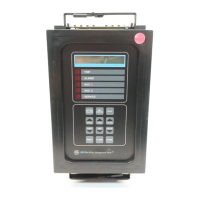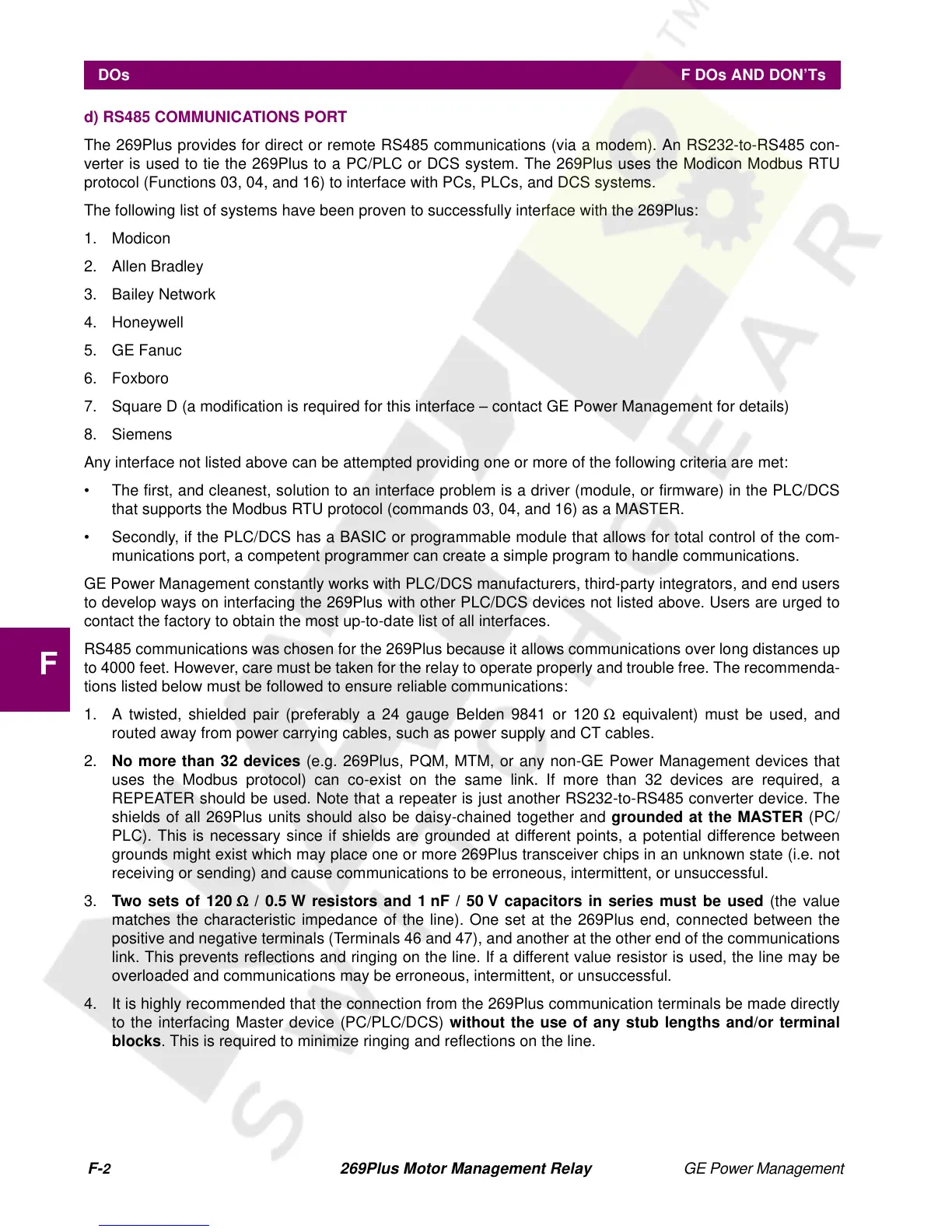F-
2
269Plus Motor Management Relay GE Power Management
DOs F DOs AND DON’Ts
F
d) RS485 COMMUNICATIONS PORT
The 269Plus provides for direct or remote RS485 communications (via a modem). An RS232-to-RS485 con-
verter is used to tie the 269Plus to a PC/PLC or DCS system. The 269Plus uses the Modicon Modbus RTU
protocol (Functions 03, 04, and 16) to interface with PCs, PLCs, and DCS systems.
The following list of systems have been proven to successfully interface with the 269Plus:
1. Modicon
2. Allen Bradley
3. Bailey Network
4. Honeywell
5. GE Fanuc
6. Foxboro
7. Square D (a modification is required for this interface – contact GE Power Management for details)
8. Siemens
Any interface not listed above can be attempted providing one or more of the following criteria are met:
• The first, and cleanest, solution to an interface problem is a driver (module, or firmware) in the PLC/DCS
that supports the Modbus RTU protocol (commands 03, 04, and 16) as a MASTER.
• Secondly, if the PLC/DCS has a BASIC or programmable module that allows for total control of the com-
munications port, a competent programmer can create a simple program to handle communications.
GE Power Management constantly works with PLC/DCS manufacturers, third-party integrators, and end users
to develop ways on interfacing the 269Plus with other PLC/DCS devices not listed above. Users are urged to
contact the factory to obtain the most up-to-date list of all interfaces.
RS485 communications was chosen for the 269Plus because it allows communications over long distances up
to 4000 feet. However, care must be taken for the relay to operate properly and trouble free. The recommenda-
tions listed below must be followed to ensure reliable communications:
1. A twisted, shielded pair (preferably a 24 gauge Belden 9841 or 120 Ω equivalent) must be used, and
routed away from power carrying cables, such as power supply and CT cables.
2. No more than 32 devices (e.g. 269Plus, PQM, MTM, or any non-GE Power Management devices that
uses the Modbus protocol) can co-exist on the same link. If more than 32 devices are required, a
REPEATER should be used. Note that a repeater is just another RS232-to-RS485 converter device. The
shields of all 269Plus units should also be daisy-chained together and grounded at the MASTER (PC/
PLC). This is necessary since if shields are grounded at different points, a potential difference between
grounds might exist which may place one or more 269Plus transceiver chips in an unknown state (i.e. not
receiving or sending) and cause communications to be erroneous, intermittent, or unsuccessful.
3. Two sets of 120 Ω
ΩΩ
Ω / 0.5 W resistors and 1 nF / 50 V capacitors in series must be used (the value
matches the characteristic impedance of the line). One set at the 269Plus end, connected between the
positive and negative terminals (Terminals 46 and 47), and another at the other end of the communications
link. This prevents reflections and ringing on the line. If a different value resistor is used, the line may be
overloaded and communications may be erroneous, intermittent, or unsuccessful.
4. It is highly recommended that the connection from the 269Plus communication terminals be made directly
to the interfacing Master device (PC/PLC/DCS) without the use of any stub lengths and/or terminal
blocks. This is required to minimize ringing and reflections on the line.

